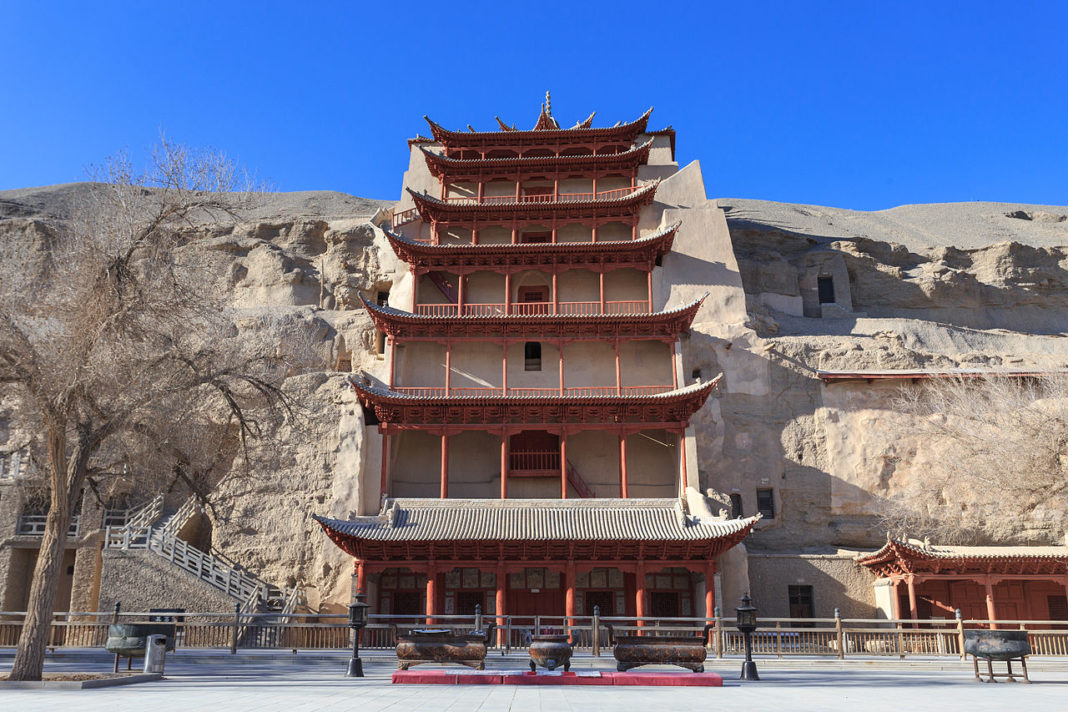The caves contain some of the finest examples of Buddhist art spanning a period of 1,000 years. The first caves were dug out in AD 366 as places of Buddhist meditation and worship. The Mogao Caves are the best known of the Chinese Buddhist grottoes and, along with Longmen Grottoes and Yungang Grottoes, are one of the three famous ancient Buddhist sculptural sites of China.
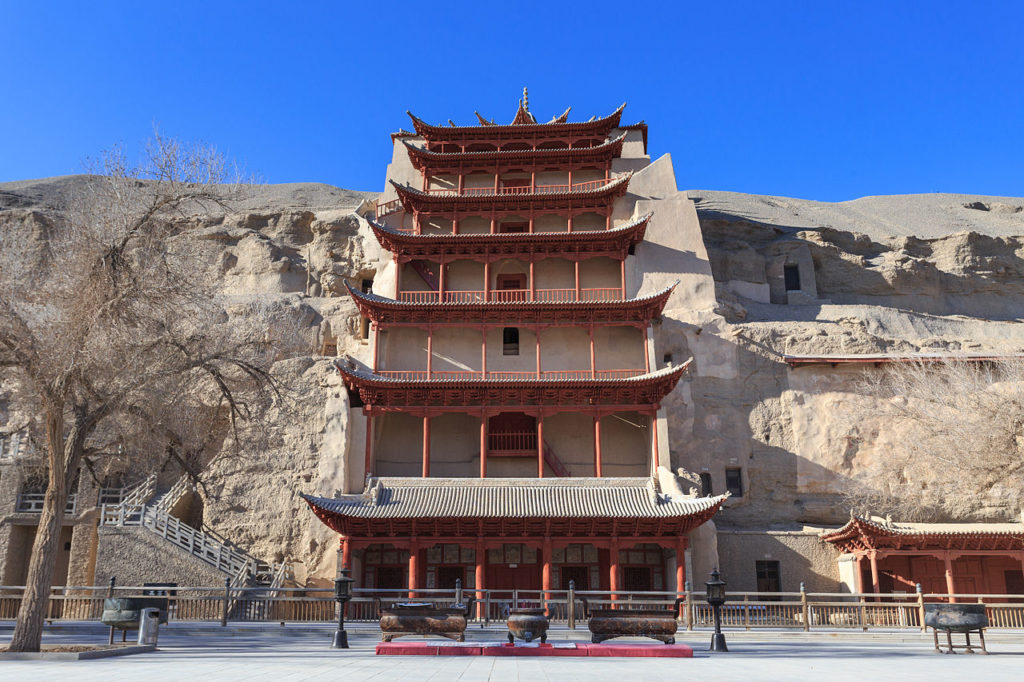
The caves were cut into the side of a cliff which is close to two kilometers long. At its height, during the Tang Dynasty, there were more than a thousand caves, but over time many of the caves were lost, including the earliest caves. 735 caves currently exist in Mogao; the best-known ones are the 487 caves located in the southern section of the cliff which are places of pilgrimage and worship. 248 caves have also been found to the north which was living quarters, meditation chambers, and burial sites for the monks. The caves in the southern section are decorated, while those in the northern section are mostly plain.
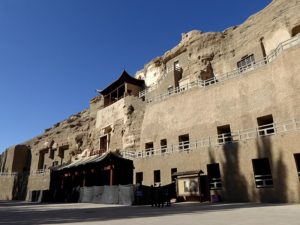
The art of Dunhuang covers more than ten major genres, such as architecture, stucco sculpture, wall paintings, silk paintings, calligraphy, woodblock printing, embroidery, literature, music and dance, and popular entertainment.
Many of the caves originally had wooden porches or fore-temples built out from the cliff, but most of these have decayed or been lost in other ways, with only five remainings, the two earliest of which are rare surviving examples of Song dynasty wooden architecture. The most prominent wooden building at the site, first built during the Tang dynasty, houses the Great Buddha and was originally four storeys high, but it has been repaired at least five times and is no longer the original structure.
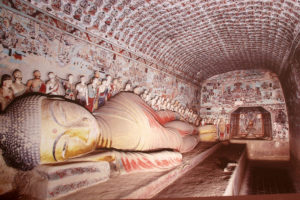
The murals in the caves date from a period of over a thousand years, from the 5th to the 14th century, and many earlier ones were repainted at later points within the period. The murals are extensive, covering an area of 490,000 square feet (46,000 square meters). The most fully painted caves have paintings all over the walls and ceilings, with geometrical or plant decoration filling the spaces not taken by figurative images, which are above all of the Buddha. The sculpture is also brightly painted.
There are around 2,400 surviving clay sculptures at Mogao. These were first constructed on a wooden frame, padded with the reed, then modeled in clay stucco, and finished with paint. The giant statues however have a stone core. The Buddha is generally shown as the central statue, often attended by bodhisattvas, heavenly kings, devas, and apsaras, along with yaksas and other mythical creatures.
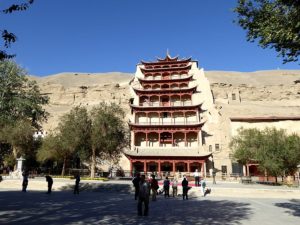
An important cache of documents was discovered in 1900 in the so-called “Library Cave”, which had been walled up in the 11th century. The contents of the library were subsequently dispersed around the world, and the largest collections are now found in Beijing, London, Paris, and Berlin, and the International Dunhuang Project exist to coordinate and collect scholarly work on the Dunhuang manuscripts and other material. The caves themselves are now a popular tourist destination, with a number open for visiting.
According to Wikipedia





